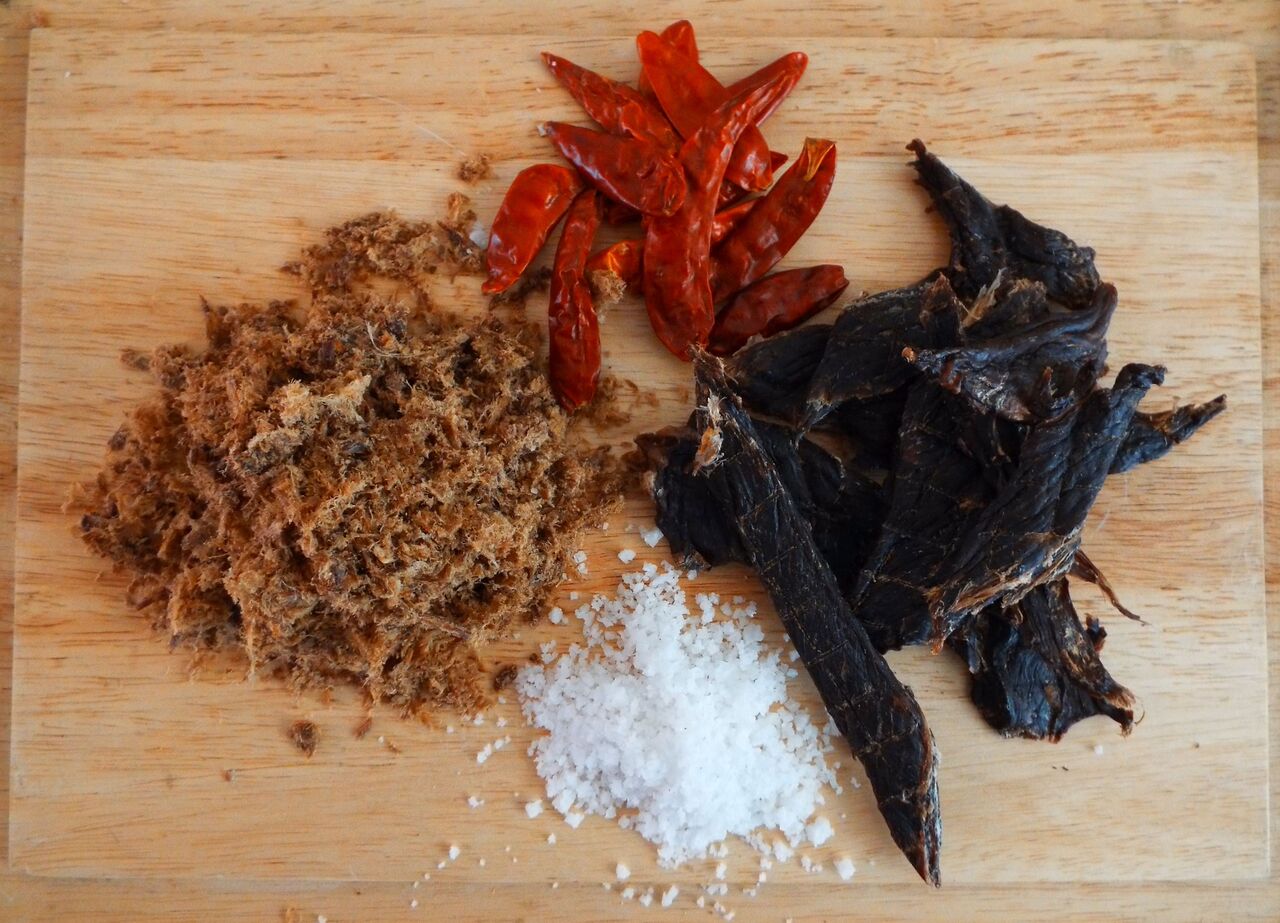While many associate Northeastern Mexico (and Southern Texas) with barbecues and charro beans, this region of Mexico actually has a much more ancient and ample food culture stemming from the mix of its earliest European transplants and native flora and fauna. While the specific origins of these first settlers differs depending on which researcher you speak with (some say they hail from Andalusia, Spain, some say from the Portugal) it’s generally agreed that the early colonizers of Nuevo Leon were of Jewish and Middle Eastern descendant. These newcomers were fleeing the Iberian Peninsula and its Catholic inquisition and brought with them to the New World many of their traditional recipes and cooking techniques. And so while you wouldn’t associate Jewish flavors with Mexican cooking, they’re there nonetheless.
Related: They Used to Eat What?! A Pre-Hispanic Food Primer
Oregano, thyme, and cumin are used in this region much of the same quantities as chiles, cilantro, and onion are used elsewhere in Mexico. The northeastern pantry is a dry one, with lots of beans, dried grains, and dried meat. Flour and bread are an integral part of the region’s diet. These days, simply seasoned meats are often dressed up with spicy salsas and fresh produce toppings, but this is the result of the most modern culinary mix of local spices, traditional recipes, and the ubiquitous Tex-Mex culture that exists along the border between the U.S. and Mexico.
For Katia Schkolnik, a researcher of the area’s Jewish history and its food, the flour tortilla is the most important element of the Northeastern diet. Early Jews ate this type of flat, flour-based unleaven bread for Passover, and eventually, the Mexican version – flour tortillas – became an everyday addition to mealtime for their descendants. The flour tortilla most definitely breaks ranks with the rest of the country’s corn-centric taco.
In Monterrey’s city market – Mercado Hidalgo – you will find a half dozen or so types of oregano for sale, baby goat strung up on crosses and settled in to smoke over an open flame, and mounds of wild piquín chiles. Despite the city’s modern, chic, exterior, its food is steeped in the traditional ways of its early Jewish and Arab inhabitants. Here are three iconic items that harken back to the area’s rich culinary history. [pagebreak]
Cabrito
Cabrito is one of the region’s most iconic dishes and most ancient. The recipe most definitely stems from a Jewish, pastoral past. Goats, easy to raise in such a harsh climate, were the perfect choice for a community of people that passed on pork. In fact, Northern Mexico is very much distinct from its neighbors to the center and south of the country in the small quantity of pork consumed there. The traditional way to prepare cabrito – on a crosswise spit that is rotated every 20 minutes, cooking via indirect heat for several hours – is still referred to as cabrito al pastor, or herder’s style baby goat, a form adaptable to open-air, outdoor fire-pit cooking. These days, you might prefer to make cabrito in a caja china, a type of roasting box, in order to conserve its juice. The meat is generally left au natural, with just a little salt to season it and the kid goat must be under 40 days in age for optimal flavor. The animal takes 5 – 7 hours to cook and comes out tender and creamy. Regios eat cabrito in their ubiquitous flour tortillas with sliced lettuce, fresh tomato and salsa. [pagebreak]
Carne Seca
Schkolnik theorizes that carne seca – a dried beef either made into a type of jerky or pounded into a rough-chopped dried meat powder – stems from ancestral ways of preserving kosher meat. There are those that also point to the region’s intense climate as a factor for processing meat in such a way that it stays fresher, longer. Various dishes are made from carne seca but it’s most often used to make a type of stew or guisado – mixed with chiles, herbs, spices or onions; or with scrambled eggs, a very typical northern breakfast. The process of curing and drying the meat once took days under the blazing sun. These days gas heaters in sterilized dehydration rooms make the process faster and more hygienic – the whole thing takes about 12 hours. Tiny butcher shops along the highways of Nuevo Leon sell bags of both carne seca natural (jerky), carne machaca (dried meat powder), and carne de zaraza (a partially dried meat that must be refrigerated and fully cooked at the time of preparation). [pagebreak]
Semitas Turcos
Semitas Turcos, in contrast to semita bread in the region which is thicker and sweetened with anise, is a type of flat, sweet meat pie. “Semitas turcos are the perfect reduction of Sephardic Jewish food,” says Schkolnik, “the combination of dried meat, nuts, and sweet.” These days, the pork lard often found in semita dough makes the dish not so kosher but oh, so, delicious. The semita turco can be flat like a pizza, or made as an empanada (packaged and room temperature) filled with dried beef, piloncillo, and sometimes nuts. These regional snacks can be found in local markets, alongside carne seca and in grocery stores throughout Nuevo Leon.


![Making Mealtime Matter with La Familia: Easy Sofrito [Video]](https://thelatinkitchen.com/wp-content/uploads/2015/10/sofrito-shutterstock__0-500x383.jpg)
![Easy Latin Smoothies: Goji Berry Smoothie [Video]](https://thelatinkitchen.com/wp-content/uploads/2015/12/goji_berry-shutterstock_-500x383.jpg)
















![Fun and Fast Recipes: Fiesta Cabbage Salad [Video]](https://thelatinkitchen.com/wp-content/uploads/2015/11/fiesta_cabbage_slaw-shutterstock_-500x383.jpg)









